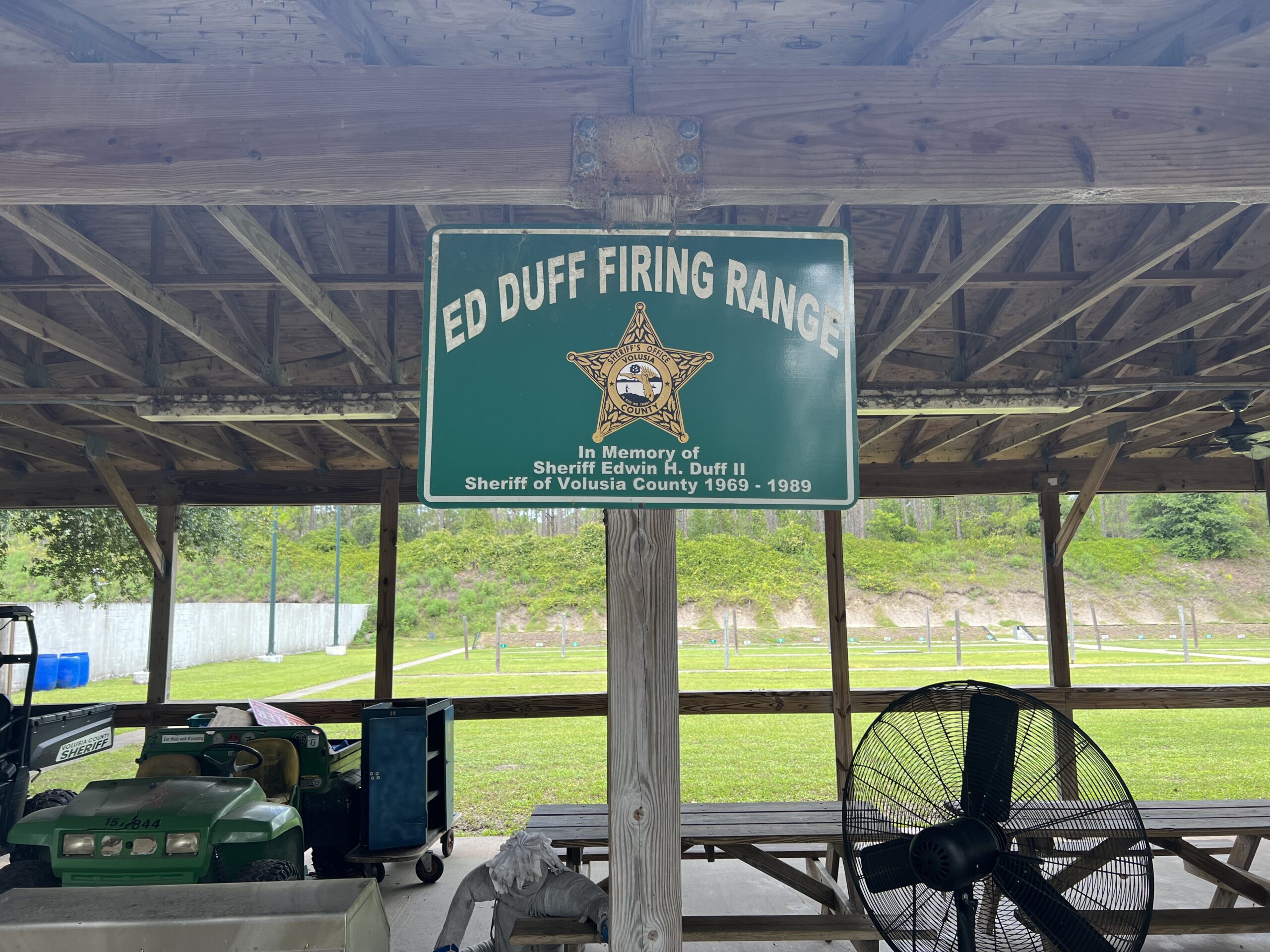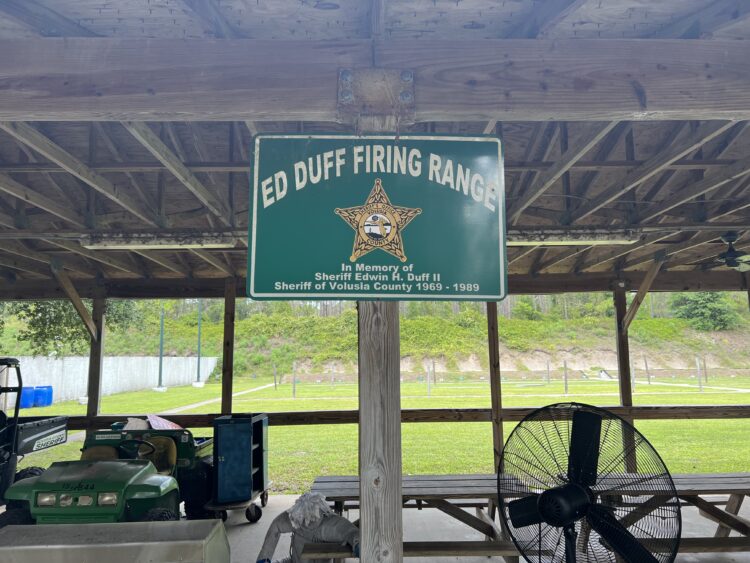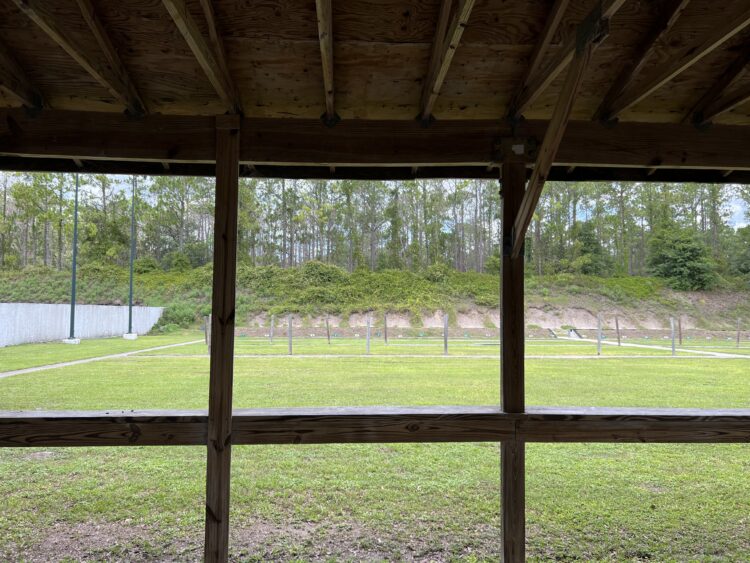From 12-15 July 2022, I had the opportunity to attend the GLOCK Armorer & MOS Instructor Workshop in Daytona Beach, FL. The venue for both of these courses was the Volusia County Sheriff’s Office Deputy Stephen Saboda Training Center, a relatively new venue which featured state of the art classroom facilities as well as world class outdoor ranges featuring reactive paper and steel target arrays. I’ll break down each course without giving away specific content that students pay GLOCK to teach. One other caveat- I took relatively few pictures during these courses because there were active LEOs in attendance who did not want their pictures posted in the public domain, as well as active SWAT team members. I must say that every class that I’ve attended with GLOCK has surpassed my expectations- to include multiple Armorer classes, an Instructor Workshop and now these courses below. If you’re on the fence about training with GLOCK, don’t be. You’ll get excellent, hands-on instruction and walk away a better shooter. Anyways- on to the courses.
Day 1- GLOCK Armorer Course:
The 1-Day GLOCK Armorer Class began at 0800 on 12 July in one of the many spacious classrooms provided. Our primary (and only) instructor from GLOCK was Phil Castaneda, who, throughout the entire week, proved to be an extremely professional, competent and knowledgeable instructor. Phil’s background intro was extremely impressive- including service in the USMC, Federal Air Marshals as well as working for various PMC’s during the Global War on Terror. It was very evident during the week that Phil had a vast amount of experience instructing students of every make, model and skill level, and he could relate to each student on a personal level, making the learning process much more enjoyable.
The morning began with the usual class paperwork- intros, and the meat and potatoes of the GLOCK pistol. I’d say that since the new GEN 5 series of pistols are the mainstay of the GLOCK lineup, we spent 95% of our time working on those, with only a GEN 4 frame to disassemble and reassemble a few times. Topics included a brief history of GLOCK, the various generations (1-5, as well as the Slim Line offerings) as well as proper nomenclature, disassembly, reassembly, function checks and how each part interfaces properly with the next. For anyone who has attended a GLOCK Armorer class in the past, none of this material will be earth shattering, but I needed to renew my certification, and was happy that I attended. Lunch was graciously paid for by GLOCK, and we were treated to some excellent Mexican food and fellowship with other students in the class. After lunch, we conducted both a practical and written test, which would serve to certify us as GLOCK Armorers for a period of 3 years. Overall, despite the static nature of classroom work, Phil managed to make the course interesting and the day passed quickly.
Day 1- GLOCK MOS Instructor Workshop:
I’d enrolled in the 2.5 day GLOCK MOS Instructor Workshop, so my trip to Florida would not be just for a single day armorer class. The firearms that I was using for the course were a GLOCK 45 MOS with Steiner MPS & Surefire X300, and my spare gun was identically configured with the exception of having a direct milled Holosun 407C on the slide. My holster was a Safariland 6390 RDO and ammo was 90 grain Speer frangible. A bit of context is in order; I am not a neophyte to pistol-mounted optics. I am a graduate of several Modern Samurai Project LE instructor classes, and have trained extensively with red dots on handguns since mid-2019. I also serve as the senior instructor for my agency with regard to pistol mounted optics, and I teach a fair number of Green Ops pistol mounted optics classes and clinics. I enrolled in this class to see how GLOCK trains end users and in particular, law enforcement instructors on the nuances and idiosyncrasies that a red dot mounted on a pistol can sometimes throw at a student. On to the course.
The day began in the classroom, where paperwork was completed and introductions made. My classmates for this course were all (with one exception) sworn Florida LEOs working in various capacities, and I was the sole dude from Virginia training in the intense Florida heat and humidity. The classroom portion began with a comprehensive safety briefing and the various theories and principles behind mounting an optic to a pistol. No- it won’t slow you down if you train correctly and yes- modern optics are incredibly durable and serviceable. The classroom portion took us to a short lunch break and we assembled on the range. it should be noted that this range is 50 yards in length and it features 25 individual firing points. Additionally, the targets could turn if so desired. We didn’t really use this feature for the course, but it was a nice touch on a state of the art LE range. Live fire began with the class firing at various targets (smaller targets at 7 and progressively larger targets at 25)- and this would serve several purposes. One, it allowed Phil to assess the overall fundamentals of the class, as well as permitting students to zero their individual optics. We settled on establishing a zero at 10 yards and confirming at 25. No matter what distance I fired at, I would have a consistent grouping three to four inches above my target. I determined that it was my optic and switched out to my spare GLOCK 45 and had no further issues. Steiner did reach out to me that same day and I have a brand new MPS in hand with zero fuss or hassle. I’m going to be completely candid here- I really prefer the crisp 3.3 MOA dot over the Holosun’s 1 MOA, but beggars can’t be choosers, I suppose. I soldiered on with the G45/407C and got used to the smaller reticle rather quickly. Day 1 culminated with everyone zeroing their gun and fixing any gear related issues.
Day 2:
The second day began on the range at 0900. I chose to arrive about 30 minutes early, and was permitted by Phil and the Range Cadre to safely dry-practice while facing downrange. Once the class was assembled, Phil again went over a very comprehensive safety briefing, and we confirmed our zeroes. Day two focused on engaging low probability targets are various distances, both from compressed high ready as well as from the holster. Since this is an instructor development course, Phil called upon various students to brief a given drill or course of fire, as well as supervise its implementation. At the 15- and 25-yard lines, students worked on the kneeling positions taught by Phil as well as the various methods of prone pistol shooting. Additionally, shooting laterally was covered in detail, as well as single handed shooting. After lunch, Phil introduced us to the GLOCK standards. These standards are only available to paying students, and GLOCK keeps a close hold on them, so I will not be publishing them here. Suffice to say- to successfully meet these standards, you need to be on point with your weapons manipulations and you need to be able to turn in good accuracy, on demand and at speed. Sound maddeningly vague? Good. It’s meant to be. Now go sign up with GLOCK Training and take this class for yourself. Day 2 culminated with each student attempting the GLOCK standards and taking mental notes on how to improve.
Day 3:
Since GLOCK advertises this course as a 2.5 day long class, Day 3 was more truncated than the previous days, but was still action packed. After class began at 0900, we began with dry practice drills – mainly 90- and 180-degree pivots and turns, and those quickly went live. Malfunction clearances were covered in depth, and we made our way to the steel range, where targets could be engaged out to 100 yards. This was to emphasize on-demand performance and to engender some good old-fashioned competition amongst the students. For my efforts, I won a GLOCK hat. After the steel challenge, it was time for an abbreviated lunch and range clean up. After that, it was graduation and back to my hotel to rest for the much anticipated 12-hour drive back to Central Virginia.
Key takeaways:
Bottom line- both of these courses surpassed my expectations in every way. Phil was an amazing instructor. He kept the classes on point, he listened to student feedback and most importantly he would give regular breaks to everyone- which is extremely important when you’re running a hot range in Florida when the daytime temps reach over 110. I found the actual course material to be relevant and realistic, and can readily apply what was taught to incumbent and recruit law enforcement personnel. I would like to extend my sincerest thanks to the GLOCK Training, Phil Castaneda and the men and women of the Volusia County Sheriff’s Office for making these classes happen.


